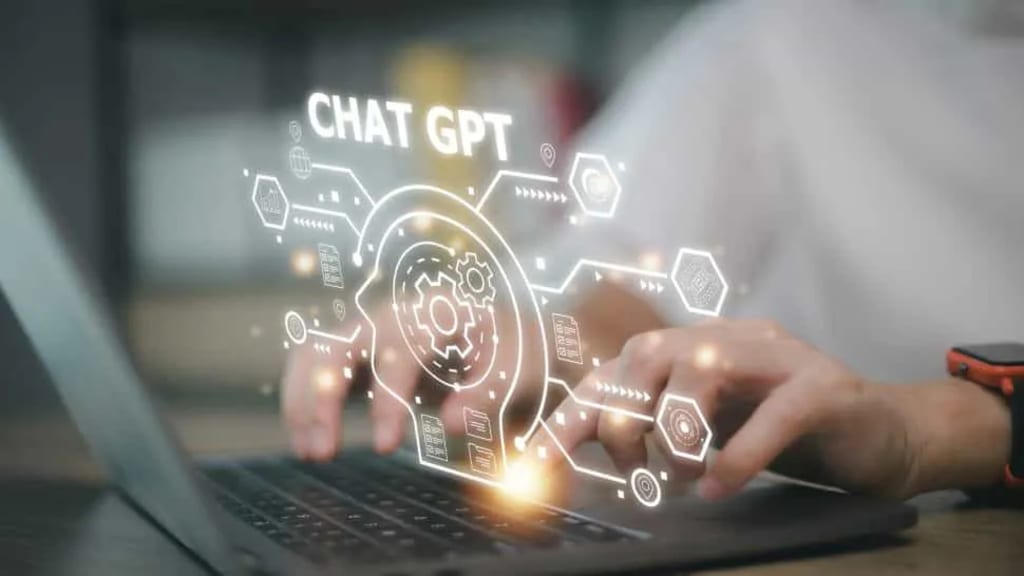What is GPT-4 and how is it different from ChatGPT?
GPT-4 is a hypothetical next-generation language model that has been the subject of much speculation in the AI community.

GPT-4 is a hypothetical next-generation language model that has been the subject of much speculation in the AI community. While there has been no official announcement from OpenAI about the development of GPT-4, there are some predictions about what it could be and how it might differ from its predecessor, ChatGPT. In this blog post, we will explore what GPT-4 could be and how it might differ from ChatGPT.
What is GPT-4 and how is it different from ChatGPT?
A powerful updated version of ChatGPT, GPT-4, was released by OpenAI, a startup backed by Microsoft Corporation. The GPT-4 program can take a dialogical conversational approach and answer questions with better data, facts and analysis. Previous iterations of the technology had a predetermined tone and aesthetic, but users of ChatGPT can modify the chatbot’s tone and delivery style.
What is GPT-4?
GPT-4 is a hypothetical next-generation language model that is expected to be more powerful and versatile than its predecessor, GPT-3. While there has been no official confirmation from OpenAI about the development of GPT-4, it is widely speculated that the company is working on it, given their history of releasing new and improved models on a regular basis.
GPT-4 is expected to have a much larger number of parameters than GPT-3, which currently has 175 billion parameters. The increase in the number of parameters would enable the model to learn more complex and nuanced language patterns, resulting in a higher level of accuracy and naturalness in its output. GPT-4 would be able to generate more realistic and coherent text than GPT-3, making it even more suitable for a wide range of applications, including natural language processing, chatbots, and AI writing.
How is GPT-4 different from ChatGPT?
ChatGPT is a variant of GPT-3 that has been specifically designed for chatbot applications. While ChatGPT has been trained on a large corpus of text data, its primary focus is on generating natural and engaging responses to user queries. In contrast, GPT-4 would be a more generalized language model that would be trained on a wide range of text data, including scientific papers, news articles, and other types of text.
One of the primary differences between GPT-4 and ChatGPT would be the size of their parameter space. GPT-4 is expected to have significantly more parameters than ChatGPT, which would enable it to generate more sophisticated and nuanced language patterns. Additionally, GPT-4 would be trained on a much larger corpus of text data than ChatGPT, which would further enhance its ability to generate coherent and natural text.
Another potential difference between GPT-4 and ChatGPT could be the way they are trained. GPT-4 could be trained using a combination of supervised and unsupervised learning, which would enable it to learn from both labeled and unlabeled data. This could result in a more efficient and effective training process, leading to a more powerful and accurate language model.
Finally, GPT-4 could be designed with more advanced natural language understanding capabilities than ChatGPT. This would enable it to not only generate natural and coherent text but also to understand and interpret the meaning behind the text. This could make GPT-4 more suitable for applications that require a deeper level of natural language understanding, such as sentiment analysis, text classification, and question-answering systems.
Conclusion
While there is currently no official information about the development of GPT-4, it is widely expected that OpenAI is working on it. If and when GPT-4 is released, it could represent a significant step forward in the field of natural language processing, providing more powerful and versatile language models than ever before. While ChatGPT has proven to be an effective language model for chatbot applications, GPT-4 could be a more generalized and advanced model that could be used for a wide range of applications. Ultimately, the development of GPT-4 could lead to more sophisticated and intelligent AI systems that can better understand and generate natural language.
About the Creator
Khushali Bhatt
https://www.instagram.com/khushali1603/






Comments
There are no comments for this story
Be the first to respond and start the conversation.